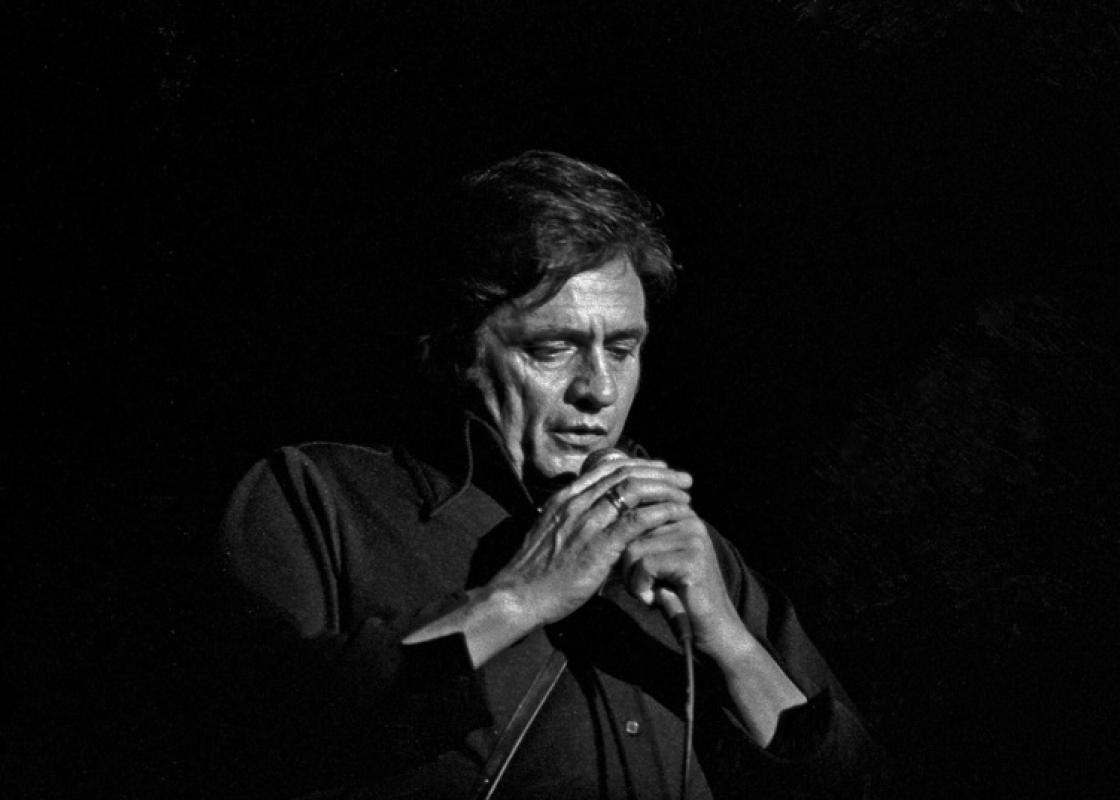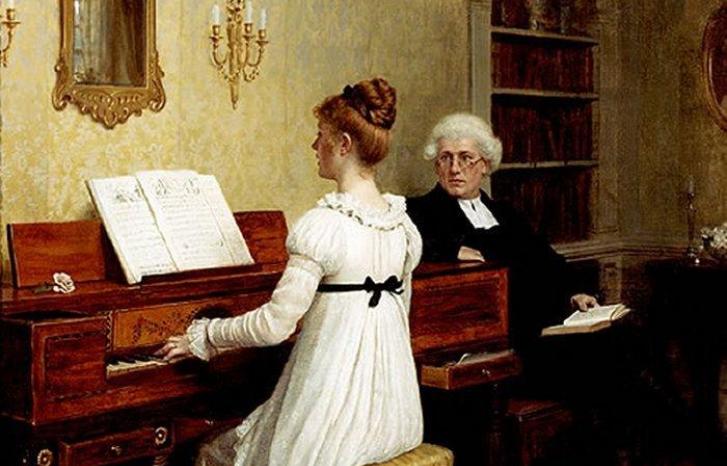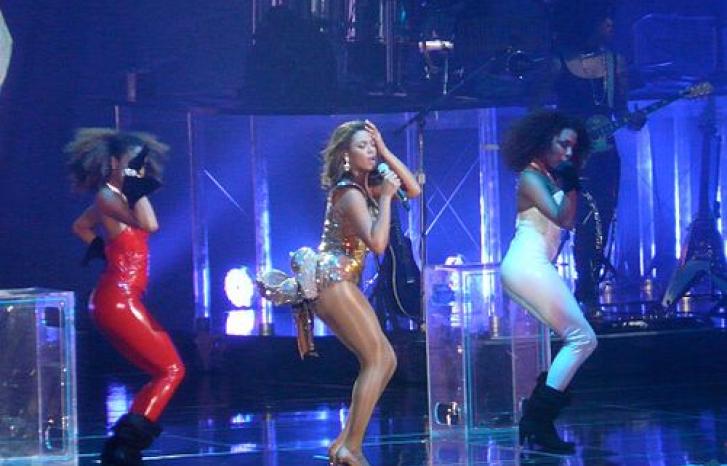“It is OK for a man to cry while watching the music video ‘Hurt’ by Johnny Cash, without letting go of his masculinity” says Askerøi.
In January 2013, he defended his PhD thesis on rhythmic music performance at the University of Agder in Norway. He has subsequently studied gender in musical expressions.
“I’ve always been fascinated by the details, which is something that definitely affects my interpretation of music. I’m interested in looking at how the various elements affect the whole in music.”
And it is precisely such details, which Askerøi calls sonic markers, that are central to his readings of musical expressions and identity in various popular musicians, such as Johnny Cash.
‘The man in black’
“Johnny Cash is often referred to as ‘The man in black’, a designation that stayed with him through a long and changing career,” says Askerøi.
In his reading of Johnny Cash’ musical identity, he applies the terms ‘vulnerability’ and ‘nostalgia’ as a point of departure. According to Askerøi, these are traditional masculine terms that are especially related to Johnny Cash’ musical expressions in general and to the music video ‘Hurt’ in particular.
“It seems that it’s OK for a man to show his vulnerability and yet be masculine as long as his feelings are related to incidents in the past.”
“I’ve conducted a close reading of ‘Hurt’ with emphasis on the implicitly masculine,” he says.
The background for the music video was Johnny Cash’ comeback at Rick Rubin’s record label American Recordings in 1994, almost fifty years after his first breakthrough. ‘Hurt’, which is a cover of an original by the band Nine Inch Nails, was released with the album American IV: The Man Comes Around in 2002.
The video portrays Cash as an ageing man, as he was when the album was recorded. He is placed in front of a table abounding with food and wine, dressed in black, alone with his guitar. The scene is cut off by retrospective glimpses from his life, both private and from concerts, as well as glimpses from the Cash museum. Towards the end of the video his wife June is standing behind him – although she was dead when the video was shot – with a worried look on her face.
“Vulnerability and nostalgia are fundamental tones in the video,” says Askerøi.
“Cash’ low baritone voice was his trademark, which appears even stronger in Rubin’s productions. Here the arrangement is stripped down compared to previous productions, and his biographical presence becomes very clear: Cash is an old, marked man looking back at his life, a life soon to be over.”
Watch the music video Johnny Cash - Hurt
Rusty baritone
Vulnerability in itself is not necessarily connected to masculinity; on the contrary, perhaps. But Askerøi emphasises that it is different when the term is linked to nostalgia, as is the case with Cash.
“It seems that it’s OK for a man to show his vulnerability and yet be masculine as long as his feelings are related to incidents in the past,” he says.
“But of course, this presupposes that he hasn’t let these incidents break him and that he is standing on firm ground in the present.”
Coding is a way of understanding sound as a potential carrier of meaning.
“What else makes Cash’ music masculine?”
“It is primarily his voice, a rusty baritone with an undeniable masculine expression. In ‘Hurt’, Cash is an old man, his body is tired, but his voice still carries well, and as already mentioned it is even more prominent than in earlier recordings,” says Askerøi.
“Thus his voice and his acoustic guitar become masculine sonic markers in Cash’ music.”
Music coding
The fact that Askerøi is a performing musician himself has definitely affected his research.

“In particular, I think the way I listen to music is affected by the fact that I play music myself,” says Askerøi.
In addition to his job as associate professor at Hedmark University of Applied Sciences, he is also a freelance musician, working as a songwriter, musician, and producer.
“In principle, all music is coded, and I am interested in how this coding is applied,” he says.
Coding is a way of understanding sound as a potential carrier of meaning, but the ascribed meaning is not an immanent quality of the sound. It is culturally dependent.
“I would probably decode a musical expression differently from someone who is not working with music,” says Askerøi.
“An example of coded sound is the guitar theme from James Bond. I would perhaps try to decipher the type of guitar and the various effects that are being used, whereas others would perhaps just refer to the entire sound as a James Bond guitar.”
The sound of decades
Another issue that is important to Askerøi is how the sound is coded differently when performed by different musicians, but also how they might acquire a whole new meaning as sonic markers in a different context.
“Most people would be able to connect a musical expression or a sound to a particular decade. Roughly, we may say that every decade has its own characteristic sound, and this sound may largely be connected to technological innovations,” he says.
A milestone in the history of music was the appearance of MTV in the eighties.
“Timbre may be an example of this. The sixties is characterised by large echo chambers, whereas the seventies saw the use of plate and spring reverb. In the eighties we got digital reverb.”
Visual elements also provide an additional dimension to the musical expression that Askerøi is interested in. A milestone in the history of music was the appearance of MTV in the eighties.
“All of a sudden we got a visual channel as a part of the music in addition to the sound recording. Consequently, we began to take advantage of the power of the visual expression,” says Askerøi.
“We had seen photos of musicians who challenged our perceptions of gender before this, of course, such as David Bowie. But with MTV, a half-naked Prince in a bathtub, with pink light, suddenly appeared in our own living room.”
Queerness
According to Askerøi, Prince is a good example of a musician who is often referred to as queer, also because he challenges the classical gender ideals in music when it comes to voice production.
“Prince had an amazing musical register. He mastered most instruments, and his voice had an enormous span. He could sing very low and extremely high pitched. The way he used his voice was pioneering, and it challenged what we normally associate with masculinity and femininity,” says Askerøi.
“As opposed to Cash, who uses his voice just as it is – deep and straightforward – Prince’s voice was sometimes characterised by an almost shameless ornamentation.”
“In the 1930s ‘crooning’, a soft, male singing style made possible by the electric microphone was banned from BBC.”
Askerøi mentions ‘crooning’ as another example of a musical expression that was perceived as queer in a given historical context.
“In the 1930s ‘crooning’, a soft, male singing style made possible by the electric microphone was banned from BBC. This soft and sentimental way of singing, characteristic for Bing Crosby, Rudy Vallee and Frank Sinatra among others, was regarded as highly feminised, unnatural, and obscene,” he says.
“A few decades later, at the time of John Lennon, the electric microphone had become a natural and integrated part of the musical production, and this way of singing was seen as a sign of authenticity.”
See also: Jazz as masculine space
Changes over time
“Can you give other examples of gendered expressions in music?”
“Traditionally, within classical music, terms such as feminine and masculine have been used synonymously with their cultural connotations. For instance, a feminine ending to a musical piece or an act meant that it was soft and tender,” says Askerøi.
“Several scholars, such as Susan McClary among others, have challenged such conventions in the history of music. Regardless of our views on nature and nurture, it is impossible to ignore the fact that what we perceive as masculine and feminine in music changes over time, and it will always depend on the culture and the context in which it appears.”
Eirik Askerøi has written a chapter on Johnny Cash in an Ashgate anthology that is due to appear by the end of the year. The anthology is titled The Ashgate Research Companion to Popular Music and Gender, edited by Professor Stan Hawkins at the University of Oslo.
Translated by Cathinka Dahl Hambro.


